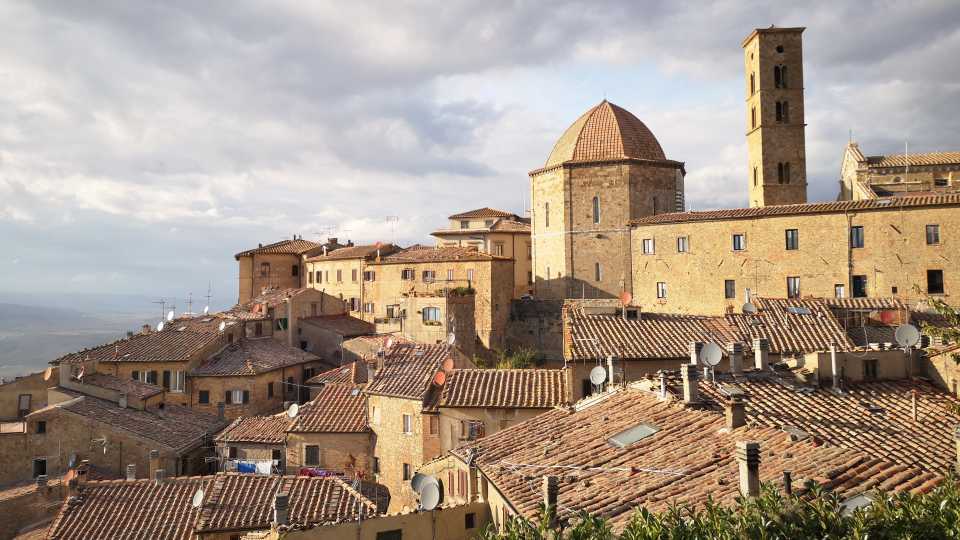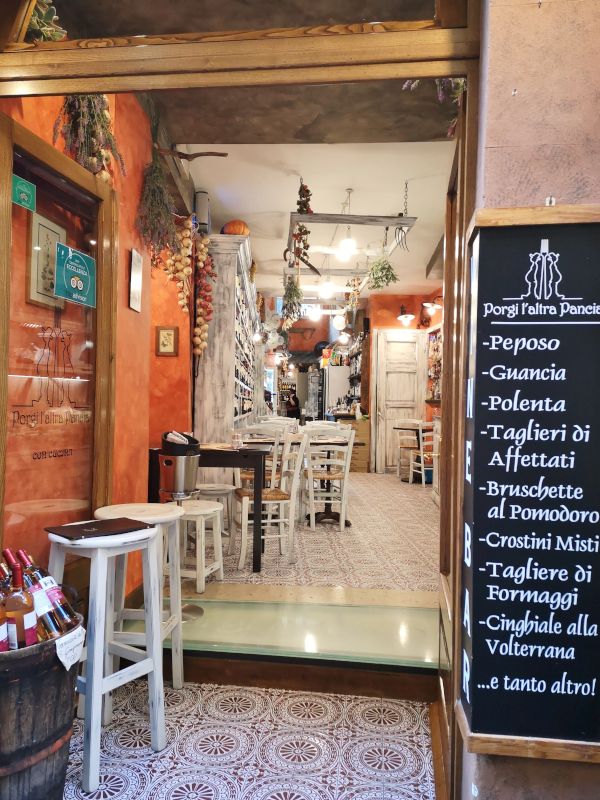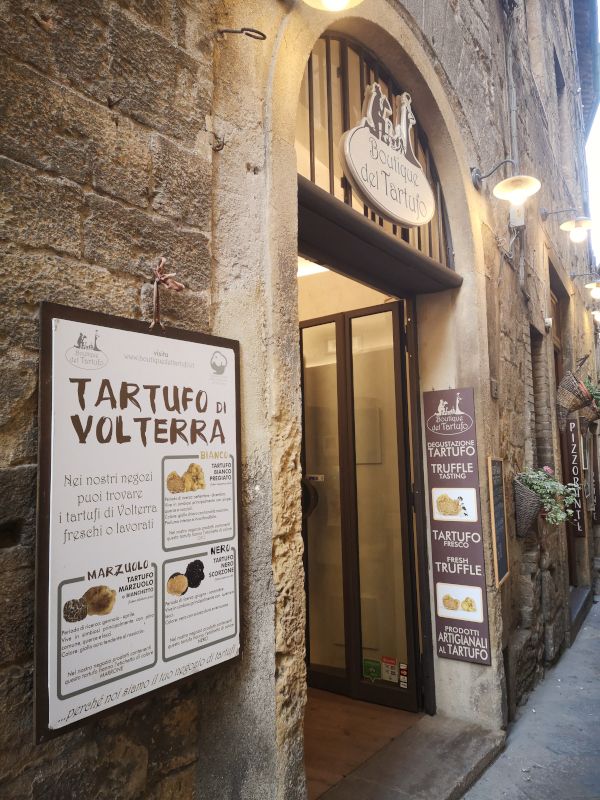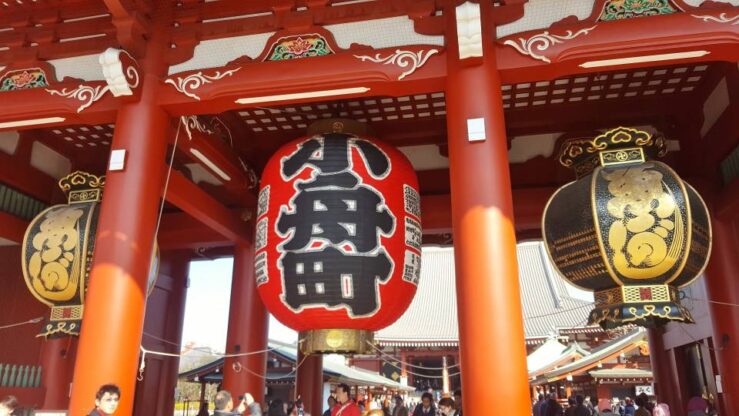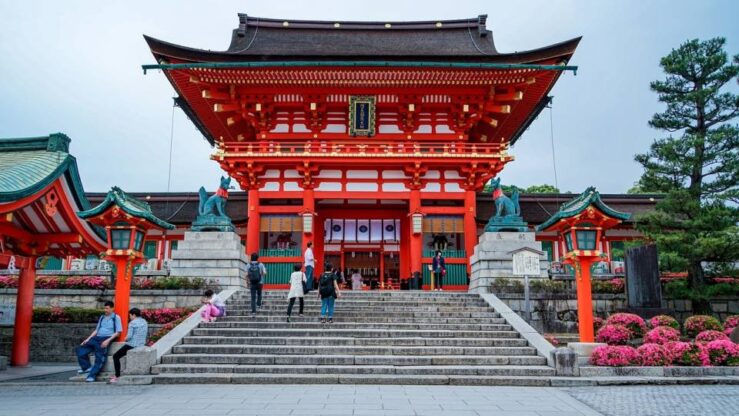Visit Volterra – One of the Authentic Villages in Tuscany
1. Volterra’s history
2. What to see in Volterra
3. How to plan a day trip to Volterra
4. Where to stay in Volterra
You arrive in Volterra by the winding road which snakes up the soft, rolling hillside. All along the route, the views are breathtaking, not least when you finally reach the walled hilltop village overlooking the valleys of Era and Cecina. Volterra is beautifully set on the highest peak of all the hills. People gather here just off the ancient walls to enjoy the stunning scenery picturesquely surrounding Volterra village and other nearby villages in Tuscany.
On the other side is a crag where the rocks abruptly fall into the valley. Viewing all across the Tuscan landscape, you can catch a panoramic glimpse of the Mediterranean right above the horizon on a clear day.
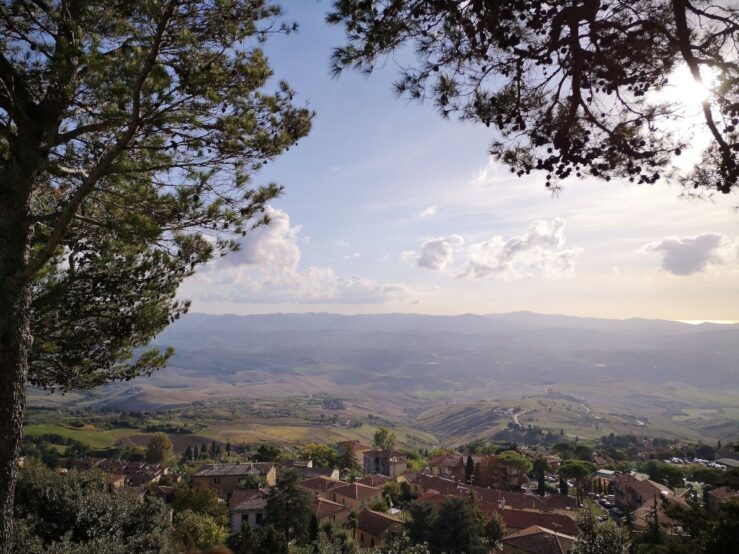
Photo: Travel In Culture
Volterra is at an altitude of 545 metres. The town originates from the Villa Nova culture (existing in the 9th-7th century BC). During the 7th century BC, it developed as an important Etruscan settlement, becoming one of the major Etruscan towns. It soon became a thriving political community with even a mint striking coins.
The Etruscans used the abundant resources from the area around them. They got salt as a preservative from the salt beds below the town. Besides, the surrounding hills were loaded with iron, tin and lead. For centuries, Volterra was an attractive place with a flourishing culture, enjoying its strong position among the other neighbouring villages in this part of Tuscany. It was seemingly easy to keep this position due to its strategic location atop the hills.
Today, there are still many well-preserved remains from the Etruscan period. When strolling around in Volterra, you may yet, surprisingly, come across the ruins of an Etruscan burial place.
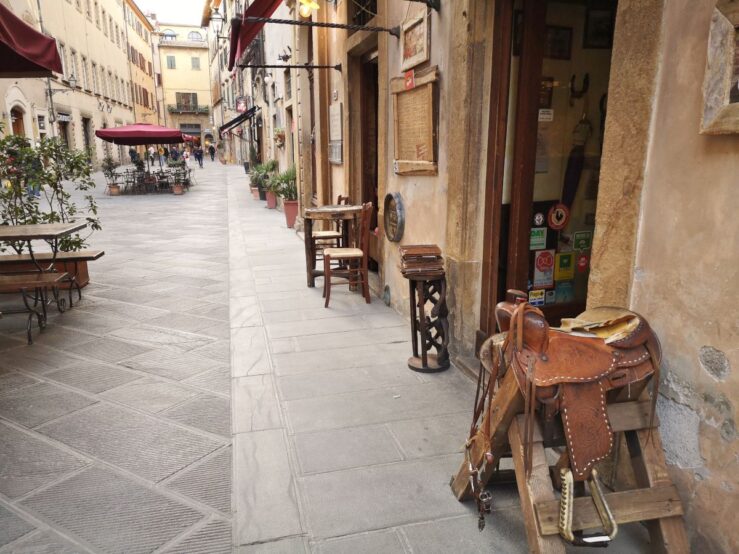
Photo: Travel In Culture
However, in the 1st century AD, the Romans arrived in Volterra and took over the power of the Etruscans. With the Romans, the Etruscan constructions were abandoned and replaced by Roman architecture. Still today, there are many traces of the Romans. Recently, a new site was discovered in Volterra, an amphitheatre, like the Colosseum in Rome. Probably, it is one of the most significant Roman remains emerging for many years. It is thought to have been able to seat about 10,000 spectators, around 1/5 of the number Colosseum could accommodate. Another fine Roman theatre is just one mile from the new site. Also, a complex of Roman baths is part of the remnants of Roman rule.
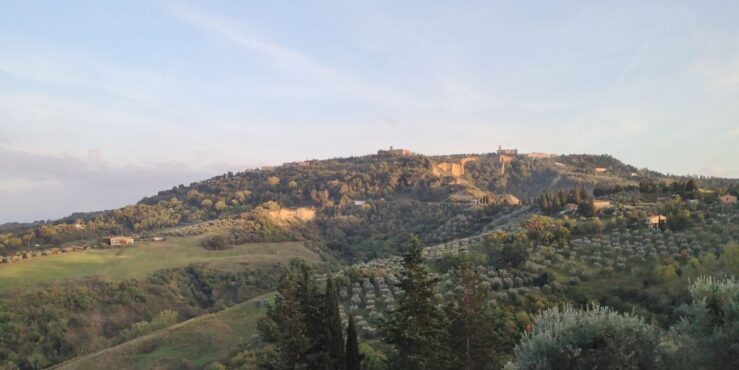
Volterra Tuscany | Photo: Travel In Culture
Of all the villages in Tuscany, Volterra later became the focal point and place of interest of the Republic of Florence – and eventually, the hilltop town was conquered by Florence. After the Republic fell in 1530, Volterra came under the control of the prominent Medici family.
Florence in 3 days
5 day trips from Florence
San Gimignano’s ancient skyline
Above the Archaeological Park, you will find the impressive Fortezza Medicea, which has been an operating prison since the 1400s. Here, quite a few renowned Mafiosi have served their sentence!
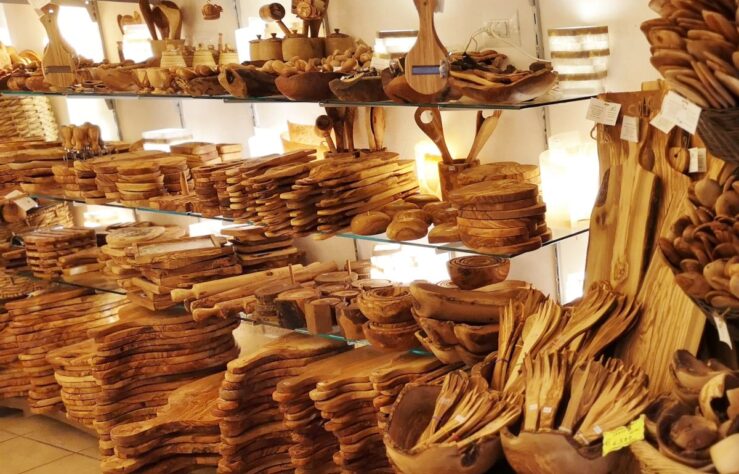
Local shops sell olive wood products and alabaster art works | Photo: Travel In Culture
Already, the Etruscans used the existence of the rich mineral resource alabaster to produce sarcophagi. Alabaster was also nearly exclusively used for cinerary urns. However, later, it became a tradition to use the large natural deposits of alabaster to produce unique artisan crafts.
Today, there is an alabaster museum, the Ecomuseum of Alabastro, in Volterra. Alabaster products are sold in the small shops deep inside Volterra’s heavy stone buildings, together with cutting boards and cutlery of olive wood, local food specialities, Tuscan wine and precious truffles. The offer reflects that many artisan workshops and studios with classical alabaster works are still active in Volterra today. If you want to see the process, you may even get a chance to visit one of them.
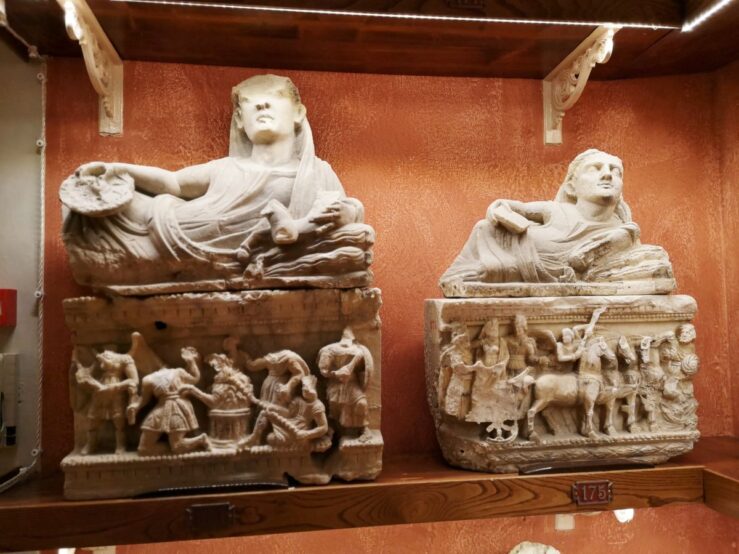
Photo: Travel In Culture
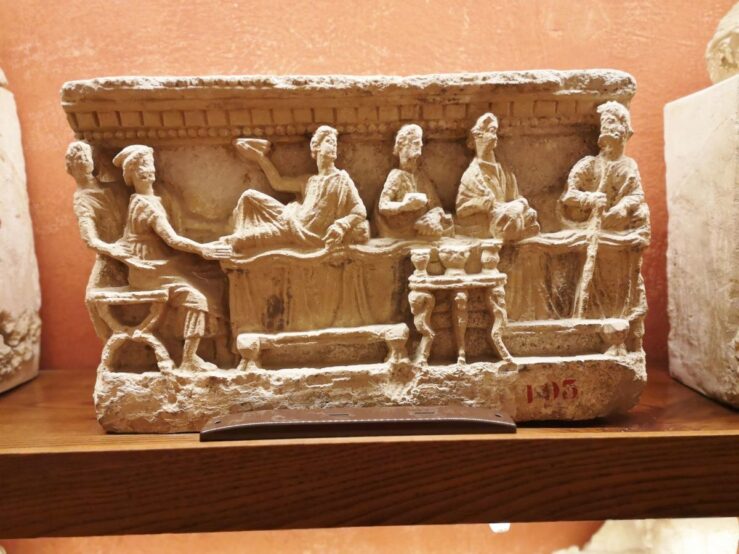
The Etruscan Guarnacci Museum in Volterra displays numerous beautiful funerary urns and sarcophagi | Photo: Travel In Culture
One of the most outstanding Etruscan museums in Italy is the Etruscan Guarnacci Museum. It was founded already in 1761. The museum contains the largest private collection of Etruscan artefacts in Italy and holds an impressive collection of reconstructed tombs and typical Volterra urns and sarcophagi. A large number of cremation tombs have been excavated in the necropolis. Almost exclusive to this region, the ashes were placed in a funerary urn inside a sarcophagus. The museum displays a considerable number of such decorated funerary urns, carved alabaster sarcophagi and tombs. It is a must-see when you visit Volterra.
On the museum’s first floor is a rare collection of Roman mosaics from buildings of Imperial Rome (in Volterra and from Segalari). Moreover, there is an impressive collection of coins with the finest examples of Etruscan coins in gold, silver and bronze, as well as over three thousand Greek, Roman Republican and Imperial coins and bronze figures. Many of the items have been excavated locally within the city walls.
When walking around the streets of Volterra, you will notice a very authentic ambience. Unique local restaurants and cafés are astonishingly hidden inside massive cream and yellow stone houses with a twist of the medieval setting.
The place is not at all touristy like Florence or Pisa. The vibe is local and pleasantly unsophisticated, and you easily lose the sense of time. It is not exaggerated to say that you are likely to feel the breath of history as you walk through the cool twilight streets at the end of the day.
See here how to plan a day trip to Volterra in Tuscany and read more about the things to do in Volterra.
Read more about day trips in Tuscany: Visit Charming Lucca and Try out the Thermal Hotspot Montecatini
Check also our Travel Guide to Florence out!
Read next: 5 Cream-of-the-Crop Day Trips from Florence and 3 Tuscan Towns in a Day
Accommodation / Tours: Check Hotels, Tours & Activities
Visit Volterra – Villages in Tuscany
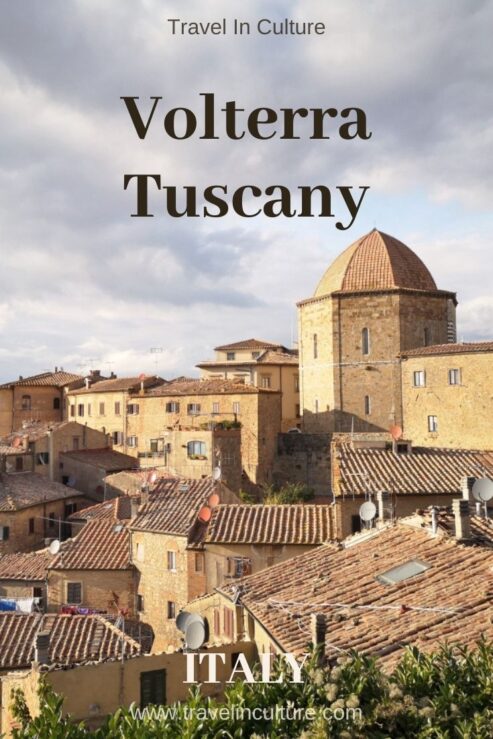
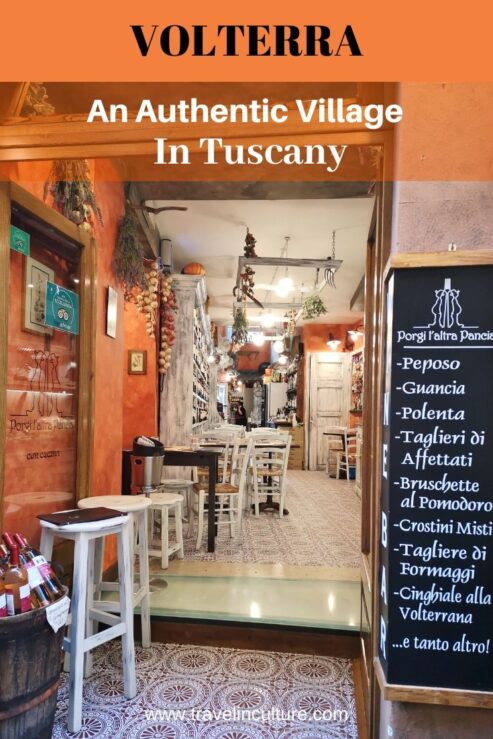
Featured image of
Visit Volterra – Villages in Tuscany:
Travel In Culture
Villages in Tuscany: Volterra


